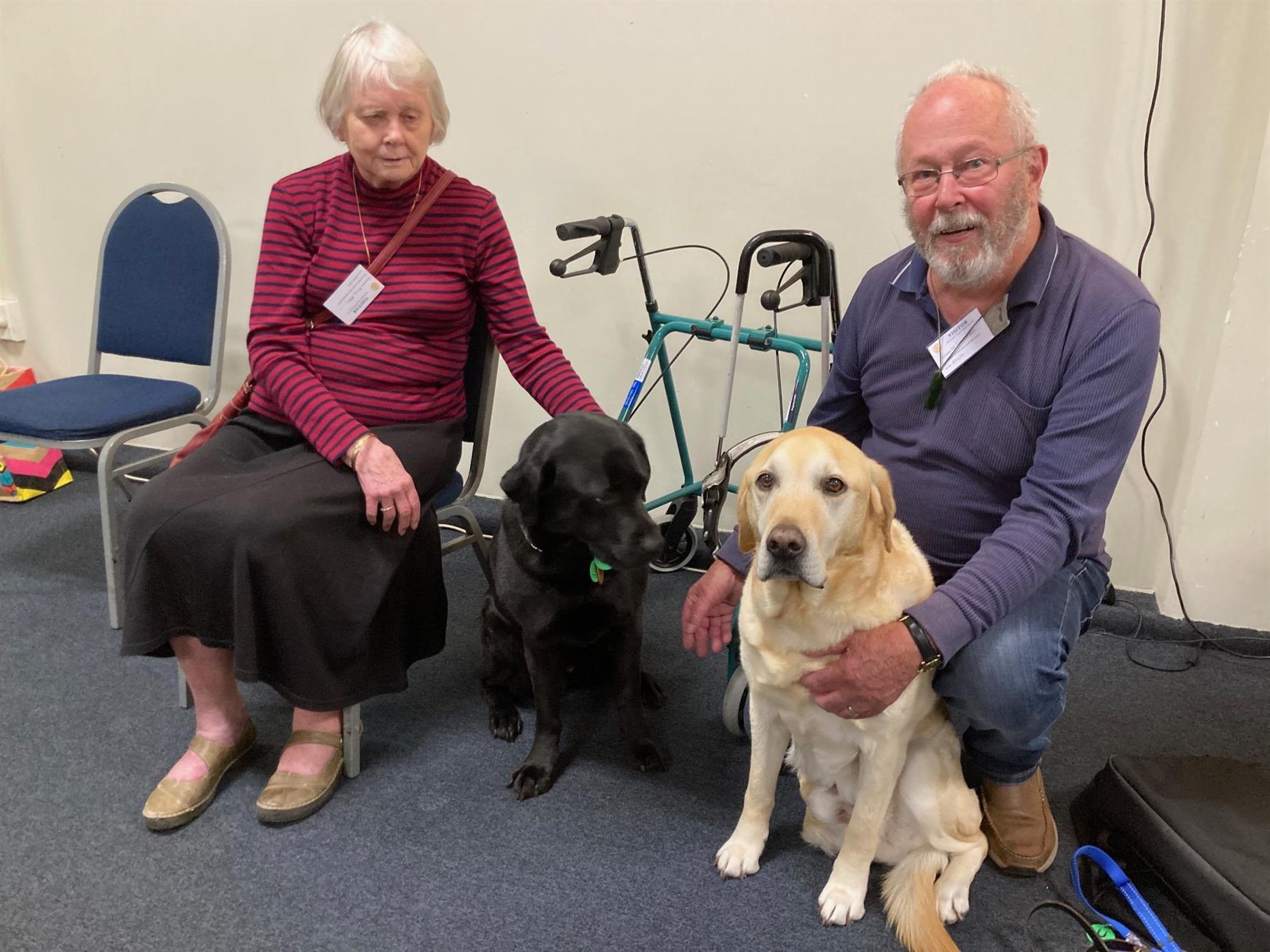
On Monday night we had an excellent presentation from Blind Low Vision NZ Guide Dogs members, Ian James, and Mary Atkins, accompanied by their respective Guide Dogs – Dendi (retired), and Ned who is currently working with Mary. We heard that there were currently nine categories of Service Dogs:
- Guide dogs to support blind and visually impaired people
- Hearing dogs
- Seizure alert and response dogs
- Diabetic alert dogs
- Allergy detection dogs
- Mobility assistance dogs
- Autism service dog
- Psychiatric service dogs
- Therapy dogs
Typically, the service dog becomes a “best friend” of the handler, or a “companion” rather than a “guide dog”. For the low or no vision person the dog provides guidance, confidence, independence, and companionship. The service dogs are trained specifically for the disability, e.g. trained to smell breath of the handler to recognize heightened diabetes.
There are currently 151 active Guide Dog teams, (23 in the greater Wellington area), while 45 people are waiting for guide dogs. The main breeds used are Labrador Retrievers, Golden Retriever, and purpose-bred first crosses, as well as a few Standard Poodles.
Guide Dogs can legally go anywhere except some animal enclosures, and some specialist hospital units (e.g. burns, oncology, intensive care).
Ian described the life of a Guide Dog in different stages:
- Socialisation: At approximately 9 weeks of age, each puppy is placed with a Puppy Raiser.
- Training: for around 12-15 months with a Puppy Raiser, then back to the Blind Low Vision NZ Guide Dog centre for six months intensive training and assessment.
- Working: Once a dog is trained, they’re matched with a person who is blind or has low vision, who becomes their handler. Together as a team, they can work for up to 9 years before the guide dog retires.
- Retiring: Once a dog retires, they enjoy a leisurely life. Often, that’s with the people who have played an important part in the dog’s life such as the handler or Puppy Raiser. Sometimes that’s with a new family.
We heard about the extensive training of the Guide Dogs, and learnt that:
- Guide Dogs are owned by Blind Low Vision NZ. 120 dogs are trained each year.
- 40-50% pass. Dogs don’t fail the course – they are “career-changed”!
- Training cost is between $50,000 - $75,000.
- Handler decides when to cross a road. The Dog decides when to stop.
- Dogs are trained to eat, and toilet, on command.
Ian impressed upon us some things we should consider when we meet a Guide Dog:
- When Guide Dogs are working, don’t pat the dog, offer food to the dog, talk to it, make noises, or ask the dog for its phone number.
- A Guide Dog is working if the dog is wearing a jacket (previously red, but now rebranded black), or has a harness on.
- Hazards – overhead obstructions, such as tree branches are particularly bad, hedges/trees overgrown on pathways, plants such as flax laying across pathways.